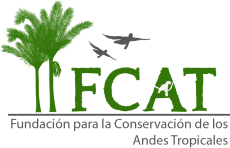The fall semester welcomed students back to campus to teach and learn virtually and in-person!
We welcomed M.S. students Peyton Fralick, Tanner Mazanec, and Ace Spitzer. Undergraduate student Cecilia Hammond has joined the lab, Sarah Uher has moved from lab tech to researcher, and students Ellie Casement, Caroline Camus, Melanie Smith and Erin Sheehy are all making great progress on their honors theses.
As we navigated a whirlwind of a spring semester and summer, the returning PhD students have been productive.
John Jones had a busy summer watching hours upon hours of bird videos and learning how to analyze birdsongs to compare acoustic complexity between two populations of white-shouldered fairywrens. The song results are complete and are now added to the first chapter of his dissertation that he hopes to submit by the end of the year. This fall has been spent juggling teaching, writing this manuscript, writing grants, and washing his hands.
Sarah Khalil had her first chapter published in Proceedings of the Royal Society: B on how testosterone regulated CYP2J19 expression in red-backed fairywrens to produce red plumage. She presented some of her new whole-genome resequencing work describing the genetic basis of red coloration in hybrid fairywrens at the virtual North American Ornithological Conference in August. She was also invited to give a virtual seminar talk at Kenessaw State University in October, and very much enjoyed connecting with the students and faculty there and discussing her PhD work. Sarah is spending most of her time at home analyzing and writing up her other chapters.
Kaushik Narasimhan successfully defended his thesis prospectus and has advanced to candidacy. He also submitted his manuscript about a range extension for the long-tailed weasel in Ecuador and is putting the final touches on the manuscript for the first chapter of his dissertation. He is excited to head to Ecuador to start field research at the FCAT station!
Annelise Blanchette performed some field work over the summer to band nestling mockingbirds in the neighborhood surrounding Tulane. She also worked on a manuscript from her master’s on the antipredator behavior of the green and black poison frog in Costa Rica and intends to submit it for review by the holiday season. Additionally, she decided to include the Anolis lizards in her dissertation and named Dr. Alex Gunderson a co-advisor to complement Jordan’s skills and knowledge. She has continued collaborating with local printmaker Pippin Frisbie-Calder on The Mockingbird Project to create a unique and educational experience for a virtual Mardi Gras 2021!
Mike Ellis started a manuscript exploring how fragmentation may be causing humid forest bird communities to transition into semi-humid forest bird communities. He also began a new remote sensing project with the American Bird Conservancy examining the effects of low impact forestry on biodiversity in northwestern Ecuador. He’ll continue these projects through the fall semester before heading to Ecuador in January to begin his Fulbright Fellowship. He also recently had a paper coauthored with former lab member Rachel Cook and others accepted for publication in the Journal of Landscape Ecology.
Luke Anderson spent the last few weeks of the semester in Ecuador at the FCAT station chasing manakins. He has been learning a tremendous amount about their basic biology and honing his mist netting and behavioral observation skills. He also finished an article on behavior away from the lek in long-wattled umbrellabirds and has submitted it for review – fingers crossed!
Jordan Karubian has been keeping busy during Fall 2020, the Semester Like No Other. He has had a few papers come out, including Sarah Khalil’s first thesis chapter on production of the eponymous red plumage on the back of male red-backed fairy-wrens, former MS student Rachel Cook’s paper on diversity of mammals and terrestrial birds in forest fragments (with Mike Ellis and lab alums Tadeo Ramirez and Luke Browne), and former honors thesis student Tadeo Ramirez’s paper on the phenology of the Chapil palm Oenocarpus bataua in Ecuador. He has also put a lot of energy into the conservation work of FCAT, which has recently expanded its reserve size from 164 ha to 550 ha and is starting an ambitious experimental reforestation project – we are looking for passionate and committed young biologists and conservationists to come and join us, so it that sounds like you, reach out!



